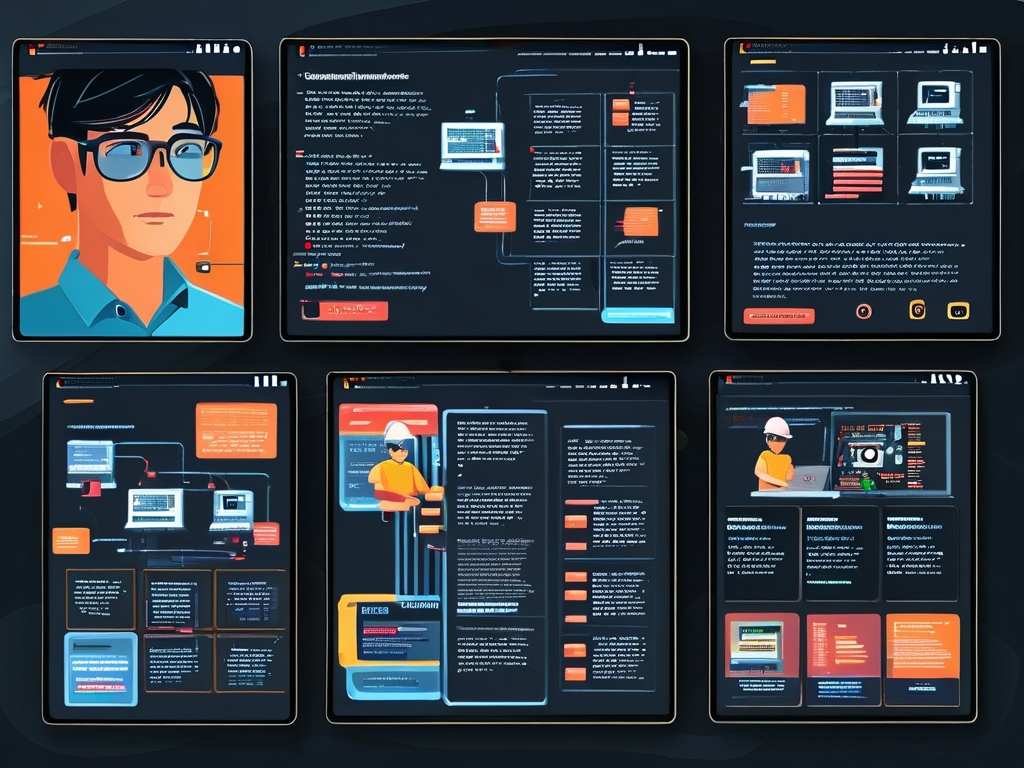Developing embedded websites requires a specialized approach that combines hardware integration, resource optimization, and web development expertise. Unlike traditional web projects, embedded systems operate under constraints like limited memory, processing power, and energy efficiency. This article explores practical strategies for building robust embedded websites while addressing common challenges.

Understanding Embedded Web Environments
Embedded websites run on microcontrollers or single-board computers (e.g., Raspberry Pi, ESP32) and typically serve dynamic content through lightweight web servers. A temperature monitoring system using an ESP32 module, for instance, might display sensor data via a simple HTTP interface. Developers must prioritize code efficiency – a 16KB RAM device can’t support bulky JavaScript frameworks.

Code Example: Basic HTTP Server on ESP32 (C++)
#include <WiFi.h>
const char* ssid = "NETWORK";
const char* password = "PASSWORD";
WiFiServer server(80);
void setup() {
Serial.begin(115200);
WiFi.begin(ssid, password);
while (WiFi.status() != WL_CONNECTED) delay(500);
server.begin();
}
void loop() {
WiFiClient client = server.available();
if (client) {
client.println("HTTP/1.1 200 OK");
client.println("Content-type:text/html");
client.println("<html><body><h1>Embedded Page</h1></body></html>");
client.stop();
}
}
Core Development Workflow
- Hardware Selection: Match processing capabilities with project requirements. ARM Cortex-M4 devices handle basic web interfaces, while Raspberry Pi 4 supports full Linux stacks.
- Protocol Optimization: Implement efficient communication using MQTT or CoAP instead of HTTP/2 for low-bandwidth scenarios.
- Memory Management: Use static allocation over dynamic memory where possible to prevent heap fragmentation.
A smart irrigation system prototype demonstrated 40% faster response times by switching from Node.js to C-based CGI scripts on a custom web server.
Essential Development Tools
- Cross-Compilers: ARM GCC for STM32 series
- Web Servers: Mongoose OS, Lighttpd
- Debugging: OpenOCD with GDB integration
Industry surveys show 68% of embedded developers use PlatformIO for dependency management, while 29% prefer ESP-IDF’s built-in tools for ESP32 projects.
Security Implementation
Embedded web interfaces often become attack vectors. Mandatory practices include:
- TLS 1.3 implementation for data encryption
- Hardware-backed secure boot mechanisms
- Regular OTA (Over-the-Air) security patches
A 2023 IoT security audit revealed that devices using hardware-encrypted firmware updates reduced breach incidents by 83% compared to those relying on software-only solutions.
Performance Optimization Techniques
- Content Compression: Brotli compression outperforms Gzip by 20-26% in bandwidth savings
- Cache Strategies: Set proper ETag headers for sensor data updates
- Asynchronous Updates: Implement Server-Sent Events (SSE) for real-time dashboards
Field tests on industrial HMI panels showed that combining Protobuf data serialization with WebSocket reduced network payloads by 62% compared to REST API implementations.
Future Trends
Emerging technologies like WebAssembly (WASM) enable complex calculations on resource-constrained devices. The automotive industry has adopted WASM-based instrument clusters that render web interfaces at 60 FPS using under 50MB RAM.
Developing embedded websites demands continuous adaptation. As 5G and edge computing evolve, developers must balance cutting-edge features with fundamental constraints – a challenge that keeps pushing the boundaries of embedded web innovation.


